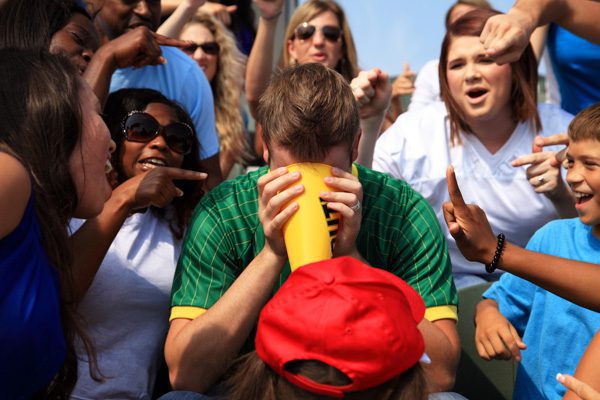Bullying in Youth Sports: Confronting this Complicated Problem Head On
Travel soccer has to be one of the most rewarding experiences for a young child to have. It teaches integrity, teamwork, competitiveness and helps build lifelong relationships. That’s what can make it so hard to watch your child go from passionate to ambivalent, or even despondent, at the prospect of playing. Bullying in youth sports is an extremely serious challenge every school and sports league will face. While current headlines gravitate toward coaches being the bullies, the players certainly play a large role as well. As parents, coaches, and players, we all need to remain vigilant to try and curb the horrendous practices of hazing and general harassment on and off the field. According to US Youth Soccer, 28% of kids say they’ve felt bullied, while 30% say they’ve engaged in the act themselves. By the time these kids are college-aged, they may be part of the 74% who see hazing on a regular basis in college sports teams, particularly so at the varsity level. Most kids who enroll in sports will have experienced — witnessed, participated in, or been a part of — some form of hazing by the time they’ve hit high school. Bullying isn’t just physical, it’s psychological. According to the US Department of Health, bullying is a power struggle. Bullying is one child or person asserting dominance over another, and it’s a cycle that repeats. The optimistic news is that bullying causes changes that are easy to spotted, identified, and stopped.
Bullying Follows Kids
Today, bullies don’t just stop when your child leaves the field or the classroom. The nature of our always-connected society allows harassment to continue through apps, on Facebook groups, and in private messaging outside of school or the soccer field. It’s constant harassment and it’s extremely stressful. It also provides some clues that perceptive parents can use to determine whether bullying is occurring. The most obvious signs are a disinterest in sports, but you may notice other changes too. For example, kids who play video games after their homework may do that less frequently because the harassers may follow them there. Kids who normally text frequently might suddenly stop, offering no explanation for that change. They may stop seeing certain friends, change their social group, or isolate themselves entirely. When you notice these clues, it’s important to remain non-confrontational and provide a space for your child to talk about what’s going on in their world. Get involved with your child’s sports league in ways that don’t disrupt practice sessions and games, such as being the team equipment manager or being in charge of water. Talk to your coach and see if you can volunteer to help out in anyway. Bullying occurs when there aren’t an extra set of eyes to watch out for it.
Coaching for Growth
Coaches can do their part by setting some ground rules for the field, beginning with a zero-tolerance policy on hazing or anything that resembles the practice. Whatever the consequences, it needs put into writing and shared amongst the group. If possible, talk with your league representatives to draft new rules with anti-bullying and anti-hazing verbiage. According to TrueSport, coaches are the key role models on and off the field. Set the example by keeping critiques respectful. Be encouraging without being abrasive. Develop relationships with your team. Learn more than their names, ask them where they come from and what their home life is like. Open up to them a bit. Maybe end practices with some ice breakers. It’s not enough just to be firm, you have to foster the right environment on the field as well. Encourage team building exercises that don’t elevate the status of one player over another. One very simple example is striking the field after practice — having everyone get involved in putting things away grows a shared responsibility for the team. Another popular game, especially with younger kids, is the human knot. Everyone lines up in a circle and uses their right hand to reach for a fellow teammate while their eyes are closed. The result is a large knot your kids must then unravel without breaking the bonds. Pat Fitzgerald, who coached football for Northwestern, is a fan of the old fashioned big brother program. Younger students get paired with older mentors, who help teach them the ropes and make them improve their game and their attitudes. These dynamics work in mysterious ways, underachievers may find themselves working harder to impress an older classmate. Bullies might get a reality check by someone with more experience.
Exploring Solutions
You’ll never know what will help to curb bullying if you’re not talking with others in your league. Whether you’re a coach or as a parent, you’ve got to speak with other teams openly about bullying and hazing to not only understand how deep the problem goes, but also what your fellow schools are doing about it. We know quite a bit about bullying, its effects, and where it occurs. What we’re not sure of is how to fight it effectively. Support your children, focus on the team, establish core values, and create an environment that fosters personal growth. With an open dialogue, travel teams can squash bullying.
To order uniforms, gear and more for your club or team, contact Soccer Garage.
How useful was this post?
Click on a star to rate it!
Average rating 0 / 5. Vote count: 0
No votes so far! Be the first to rate this post.



